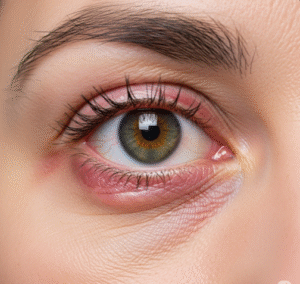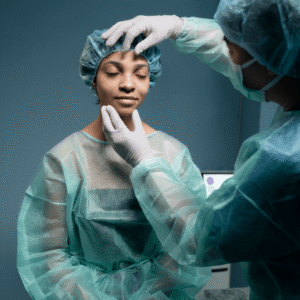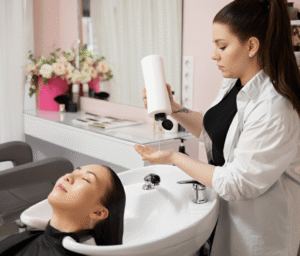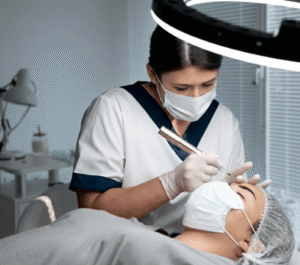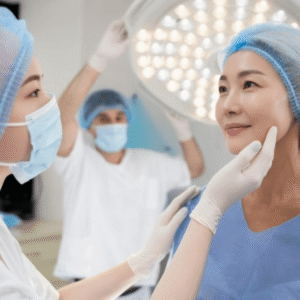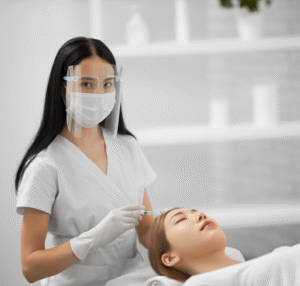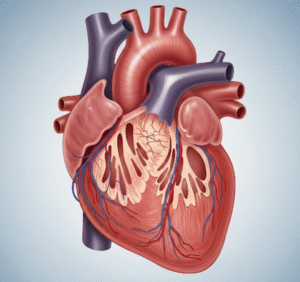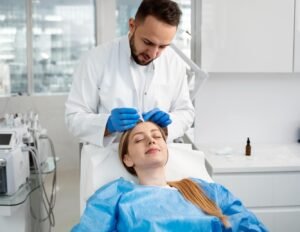What It Is
Sliding genioplasty is a surgical procedure that repositions the chin bone (mandibular symphysis) by making a controlled cut in the lower jaw and sliding the bony segment forward, backward, upward, or downward. Unlike chin implants, this technique modifies the patient’s own bone, creating permanent structural changes without the use of foreign materials.
In Korea, sliding genioplasty is frequently performed for patients seeking natural, permanent results with minimal risk of implant-related complications. Korean surgeons often combine this procedure with jaw contouring or orthognathic surgery to achieve balanced facial proportions.
Why It’s Done
Cosmetic Reasons:
- Corrects a weak or recessed chin
- Refines an overly protruding chin
- Adjusts chin height (long chin or short chin correction)
- Improves overall lower face balance, especially in combination with rhinoplasty
Functional Reasons:
- Corrects bite misalignment in selected cases
- Improves speech or chewing issues caused by chin positioning
Age & Lifestyle Factors:
- Typically performed on adults after bone growth is complete
- Non-smokers and patients in good health recover more quickly
- Preferred by patients who want permanent correction without implants
Alternatives
- Chin Implants: Silicone or Medpor implants provide projection but don’t alter bone structure
- Dermal Fillers: Non-surgical, temporary enhancement of chin shape
- Fat Grafting: Natural option, but volume may reduce over time
- Orthognathic Surgery (Two-Jaw Surgery): For patients with severe skeletal misalignment involving both jaws
Preparation
Patients preparing for sliding genioplasty in Korea undergo:
- Consultation: 3D facial analysis, CT scans, and simulation of surgical outcomes
- Medical Screening: Blood tests, dental and orthodontic evaluations if needed
- Lifestyle Adjustments: No smoking, alcohol, or blood-thinning medications prior to surgery
- Fasting: Typically required for 6–8 hours before general anesthesia
How It’s Done
Type: Surgical, performed under general anesthesia
Duration: 1.5–3 hours
Procedure Steps:
- A hidden incision is made inside the mouth (no external scars)
- The chin bone is exposed, and a horizontal osteotomy (bone cut) is made
- The lower chin segment is repositioned forward, backward, upward, or downward as planned
- Titanium plates and screws secure the bone in its new position
- Incision is closed with dissolvable stitches
Hospital Stay: Usually 1–2 nights for observation, though some cases may be outpatient with advanced care protocols
Recovery
- First Week: Swelling and mild discomfort peak in 2–3 days; managed with pain medication and cold compresses
- Wound Care: Antiseptic mouth rinses and soft food diet recommended due to intraoral incision
- Downtime: Most patients return to daily life within 10–14 days
- Restrictions: Avoid strenuous activity for 4–6 weeks
- Final Results: Visible after swelling subsides, typically 2–3 months post-op
Possible Complications
Although sliding genioplasty is safe in expert hands, potential risks include:
- Infection at the surgical site
- Nerve injury causing temporary numbness of the lower lip or chin
- Asymmetry if bone repositioning is not precise
- Hardware issues (rare, but plates or screws may require adjustment)
- Dissatisfaction with aesthetic results, minimized through pre-operative imaging and planning
Treatment Options in Korea
Diagnosis
Korean clinics employ advanced diagnostic tools such as:
- 3D CT Scans for accurate bone assessment
- Facial Simulation Software to preview surgical outcomes
- Specialist Evaluations by maxillofacial and plastic surgeons working together
Medical Treatments
Non-surgical alternatives for patients not ready for bone surgery include:
- Dermal fillers or fat grafting for subtle chin enhancement
- Chin implants for patients wanting permanent change without bone cutting
Surgical or Advanced Therapies
- Sliding Genioplasty Alone: Corrects projection, height, or asymmetry
- Combined with Jaw Surgery: For patients needing broader skeletal correction
- Hybrid Approaches: Sometimes combined with fat grafting or neck liposuction for enhanced results
Rehabilitation and Support
Korean clinics provide comprehensive post-op care, including:
- Regular checkups to monitor bone healing
- Swelling reduction treatments such as lymphatic massage
- Post-op dietary guidance for safe healing
- International patient services like translation, transport, and recovery accommodations


